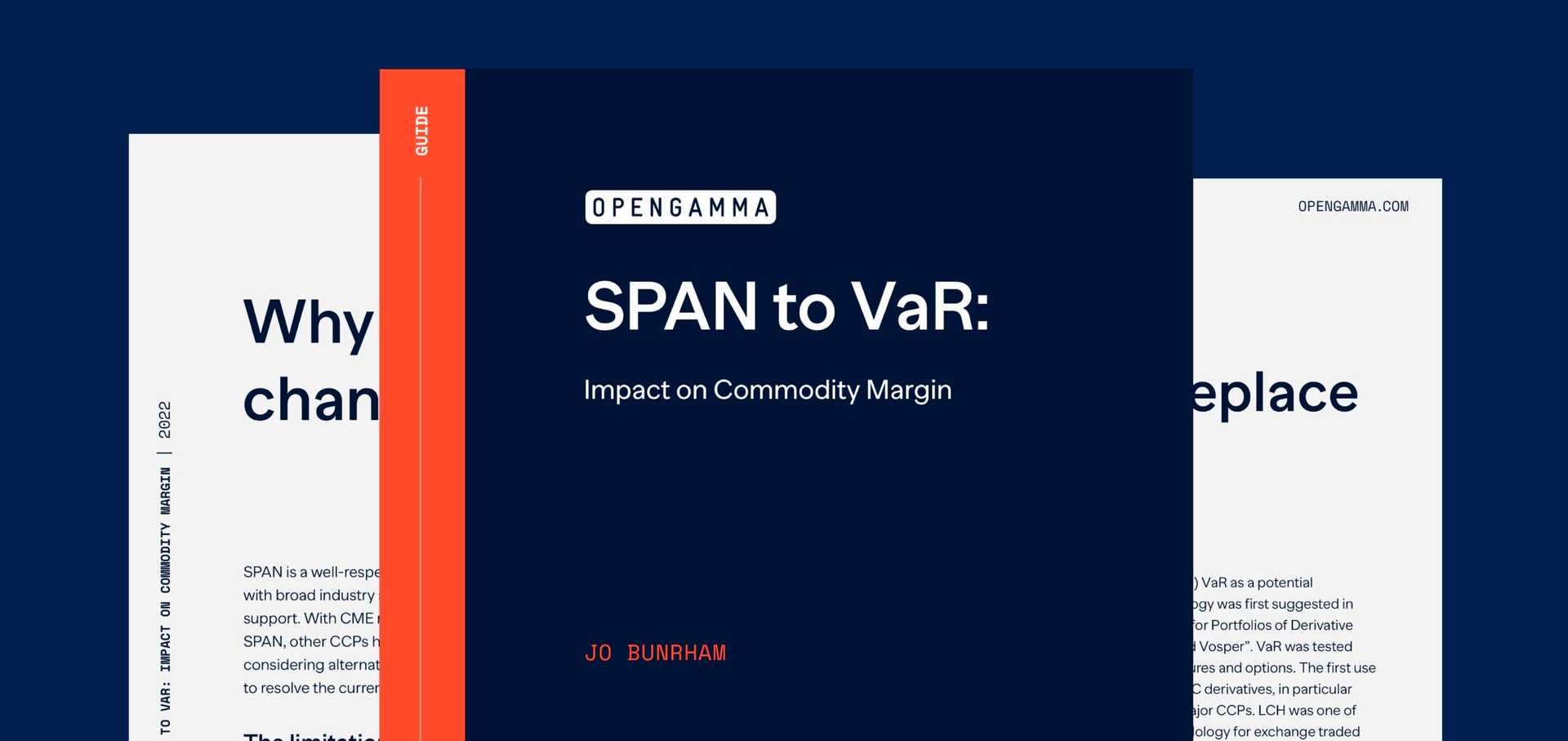Market participants are generally aware of the margin rates published on services such as Bloomberg. These are based on the SPAN scanning range – the expected future price move. Given the way that the SPAN methodology works, if you just trade futures for a single product, then you would multiply your net position by this number and it will give you margin. But, it doesn’t take account of any spreads or offsets if you have a more complex portfolio, but it is a good approximation.
There is a potential equivalent of this for VaR based margin. CCPs may supply a one lot margin (the equivalent of calculating VaR on a position of one future) and this can be used in the same way as the SPAN margin rate. There are, however, a couple of problems with this.
The SPAN scenarios are such that the expected price moves up and down are the same, so it doesn’t matter whether you have a net long or net short position the theoretical loss will be the same. However, VaR is based on observed historical price moves which could, for example, be more often price rises rather than price drops, is not a symmetrical calculation, so the VaR for a long position will not be the same as the VaR for a short position. This means that two numbers will need to be provided to allow an estimate to be calculated – long VaR and short VaR.
SPAN scanning range only changes when the CCP analyses the historic volatility and decides that it should be either increased or decreased. Day-to-day it generally stays unchanged leading to stable margin numbers. The same is not true for VaR. Every day a new scenario will be added based on the previous day’s price moves. And, in addition, because the CCPs use FHS VaR these scenarios will be scaled to current volatility (that’s what the FHS in FHS VaR means). All this means is that margin levels are much more volatile; every day the values calculated for the 1 lot VaR will be different.
Are There Any Other Changes?
When a CCP changes its margin algorithm it needs regulatory approval. This approval will only be given if the algorithm is shown to conform to all current regulation, which in the case of CCPs includes Principles for financial market infrastructures (PFMI), published by the Committee on Payments and Market Infrastructures (CPMI) and the International Organization of Securities Commissions (IOSCO).
So any CCP that is moving from SPAN to VaR will need to consider a whole load of other risks that are included in the regulations.
What Do You Need To Do?
If you are currently estimating margin based on a single published margin rate then you need to start considering the additional complexity that the VaR equivalent will introduce – a rate that changes daily and a different value for long and short positions.
If, on the other hand, you currently replicate the SPAN margin calculation, potentially using PC SPAN, then things get much harder.
SPAN is a standard algorithm, provided under license by CME to the majority of the CCPs clearing futures and options. But with the move to VaR based margining, each CCP is implementing their own algorithm. Which means that either you will need to replicate each of these algorithms or integrate with the different tools that each of the CCPs will provide.
This is almost certainly too big a task to take on given the skills and available resources of the majority of market participants. The level of investment and effort required to track and explain ETD margin will increase by an order of magnitude.




